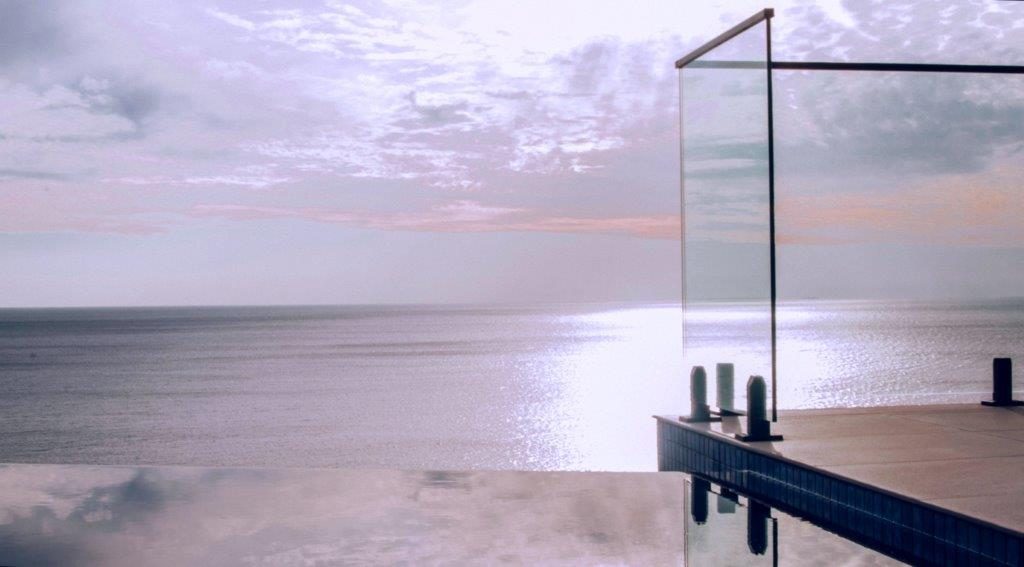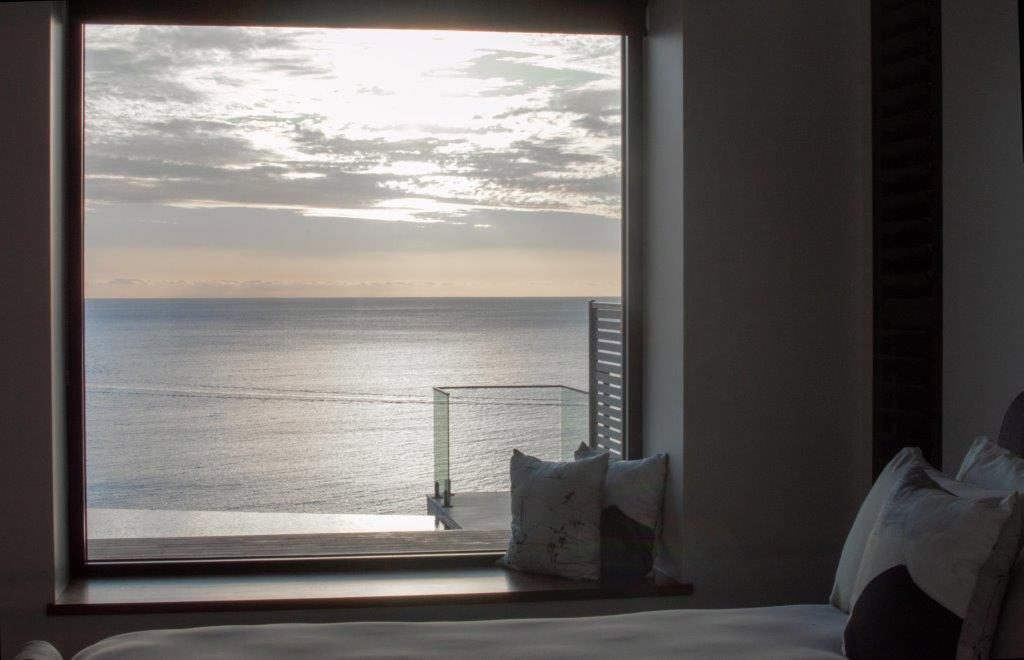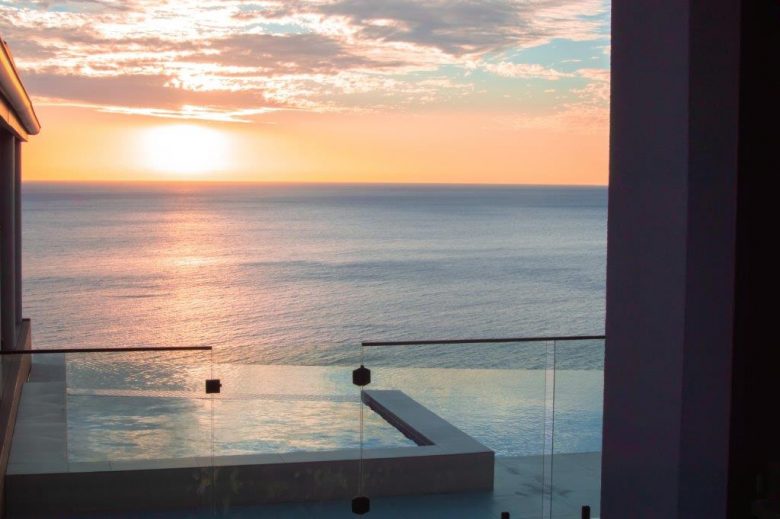Ok,… Technically the World first BIPV-T Solar roofed Poolhouse at Marino Adelaide SA was finished a month or so ago. I just had to post these pics that I took on a recent visit and Debriefing with the owners. While undergoing a serious debriefing session with the Owners over a glass (or two) of Red wine I couldn’t resist getting a few sunset pics of the house and pool.

The consensus was that they are very happy with their Tractile roof. The power production exceeded their expectations, with around 75 kwh of energy produced over a typical day. Since the 3 Tesla Power walls (yes they added a third) can store around 21 kwh the surplus energy the system is feeding back into the Grid is generating a healthy credit for them.

The initial Brief was for an Infinity pool with views. At the end of the first briefing session (and second bottle of Red) the decision was made to investigate solar technology that would power and heat the pool. A week later we had selected a PV system. BIPV-T was still very new but the Owners took a leap of faith and we decided on a 120 sqm Building Integrated, Photo-voltaic, Thermal roof by Australian company “Tractile”.
I then just needed to design a building to fit the roof…
Tractiles unique marketing niche is that their BIPV roofs’ PV output is maximised by a unique water jacket that cools (hence the -T for thermal in the acronym) the roof tiles, which also double as PV cells. It was to be the biggest installation they had undertaken involving a design for 4 separate but interconnected 5kw systems on two inverters. The byproduct waste warm water is transfered to either an underground heat exchange unit for the pool or pumped through the floor slab to heat the house hydronically.

The final Pool-house was a little larger (at 160 sqm) due to the space required for flashings at the roof edges and a last minute decision that it should also act as a stand alone guest-house. A high raked ceiling is a result of needing to elevate the Solar roof, due to another 2 storey residence only meters to the North. The 5.5m high ceiling provided the opportunity for the installation of large hilites which flood the building with light.

Aesthetics and being green do not need to be mutually exclusive. The Guest Master bedroom has a picture window that overlooks the infinity pool and features a deep window seat. A perfect reading spot. Due to the extreme environment living on a clifftop offers up there was a decision that
all windows and doors were to use a commercial quality Aluminium framing. Normally timber windows would be the best choice as they are not only more sustainable, but offer up the lowest conductance values. As this building will produce more energy than it will consume the Owners final decision was that the use of powdercoated aluminium, a very high embodied energy product, was justified. Other luxury touches were added throughout the build using this same reckoning.

Pool, Sea, Sky…. All with a clear conscience
Architects are complex creatures. We love pretty things and we also love the idea of saving the planet. There is also (unfortunately) the need to eat. Architects walk a fine line, as when we take on a Client the main aim is to fulfill the brief. The more money spent, the bigger the fee becomes, but this also means more environmental impact. Some brave souls may turn down million dollar commissions due to their ethical stance, but I would posit this does nothing to curb Environmental damage. The Client will just choose someone else, who will probably get them to spend more and do even greater harm. Instead of turning down these commissions take them on and instead turn the Clients world view around. Do not be too driven. A chat watching the sun-set over a glass of wine is much better than a obsessive lecture. Environmental driven decisions are imperative for our survival on this planet, but sometimes small steps are needed. Maintain your ethics, but learn to compromise. Tread lightly, do what you can when you can and everyone wins.




Comments
Gooday,
how much does this house cost to build?
Author
The solar system alone was over $120k. Beyond most budgets. Most people put in just a few panels and not a whole roof, so the system compared to standard PV per KWH is actually very competitive. This house also pushed the limits with the site being steep and rocky and wanting to have the plant room out of sight. In the end….No change from $1 mill for what is just an average sized house.